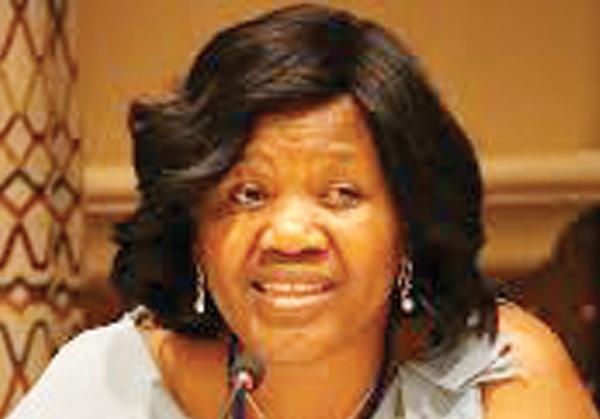
AIDS will not be eradicated by 2030 – UNAIDS report

Last year world leaders came together at the United Nations in New York and agreed a groundbreaking Political Declaration on HIV and AIDS. That plan takes on the inequalities that drive the pandemic and will dramatically reduce new HIV infections and AIDS-related deaths by 2025 and end the AIDS pandemic as a global health threat by 2030 – if world leaders fulfill it. Data just released in the new UNAIDS report, In Danger, reveals that the world is not on course to end AIDS by 2030.
Globally, more than 1.5 million people became newly infected with HIV last year. That’s 4,000 people every day, more than a quarter of them young people aged 15-24. Worldwide, an adolescent girl or young woman acquires HIV every two minutes. The 3.6% reduction in global HIV infections in 2021 is the smallest annual fall since 2016. On the current trajectory, there will be a projected 1.2 million new HIV infections worldwide in 2025, more than three times higher than the target of 370 000. Eastern Europe and central Asia, Middle East and North Africa and Latin America have all seen increases in annual HIV infections over several years. In Asia and the Pacific—the world’s most populous region—UNAIDS data now shows new HIV infections are rising where they had been falling. Climbing infections in these regions are alarming.
Through an evidence based multisectoral HIV response, Namibia has made significant progress to towards achieving HIV epidemic control and sustainability. As of December 2021, 92% of PLHIV knew their status, among them, 99% were on treatment and 93% of those accessing treatment were virally suppressed. The new HIV infections has declined by 40% (from 11,000 in 2010 to 6600 in 2021), and the mother to child final transmission rate has declined from 12% in 2010 to 4.6% in 2021.
Although affordable treatments are available to prevent most AIDS-related deaths, worldwide 650,000 people died of AIDS-related illnesses in 2021. Namibia recorded 3000 AIDS-related deaths in 2021, and by 30 June 2022, 6.6% of the population were infected by COVID-19, with a case fatality rate of 2.4%.
The COVID-19 pandemic, the war in Ukraine and the global economic crisis have created extraordinary headwinds that threaten national AIDS responses. Global solidarity is fraying, richer countries are cutting or redeploying humanitarian budgets, low- and middle-income countries are saddled with debt repayment and being forced to cut back spending on essential services like health and education and, in many countries, there is a lack of political will to challenge inequalities, gender-based violence and the criminalization and marginalization of vulnerable groups of people that continue to drive HIV infection levels.
The human cost of a stalled HIV response is chilling.
The human and financial cost of not ending AIDS by 2030 would far outweigh the cost of the immediate and necessary action to turn the ship around. The good news is that success is possible, and we know how. Here are actions that countries can take up on to defend, expand and sustain their HIV response:
- Address the inequalities that stop people receiving HIV prevention, testing and treatment services. In diverse settings, countries and communities are taking action to end inequalities and close gaps. Building on this momentum, policy makers need to strengthen their understanding of localized epidemics to focus on eliminating the inequalities that are slowing progress against the pandemic.
- Realize human rights and gender equality. Punitive, discriminatory, counterproductive laws and policies must be removed. The human rights of women and girls, including their sexual and reproductive rights, must be upheld. Countries must prioritize and integrate focused, well-resourced efforts to end gender-based violence into national HIV responses.
- Make a new push for HIV prevention. Countries urgently need to elevate the political and financial prioritization of HIV prevention and move to large-scale implementation of prevention projects so that innovations such as PrEP and long acting injectables become much more widely accessible, especially to vulnerable groups of people like young women and adolescent girls, gay men and other men who have sex with men, sex workers, people who use drugs and transgender people.
- Support and effectively resource community-led responses. Countries must recognize the essential role of community-led responses and integrate them into national HIV planning, implementation, and monitoring. Communities should be effectively resourced and laws that impede community-led responses should be removed.
- Ensure sufficient and sustainable funding. Major new investment to ensure a fully funded global AIDS response is essential both from international donors and governments in low- and middle-income countries. Coordinated international action is also required to alleviate the debt crisis facing too many countries and to counteract the need for short-sighted and counterproductive national austerity measures.
It is still possible to end AIDS by 2030. We know the inequalities obstructing the HIV response and we know how to tackle them. We just need collective action.
UNAIDS Geneva | Sophie Barton- Knott | [email protected]
UNAIDS Namibia | Johanna Nambahu | [email protected]










































